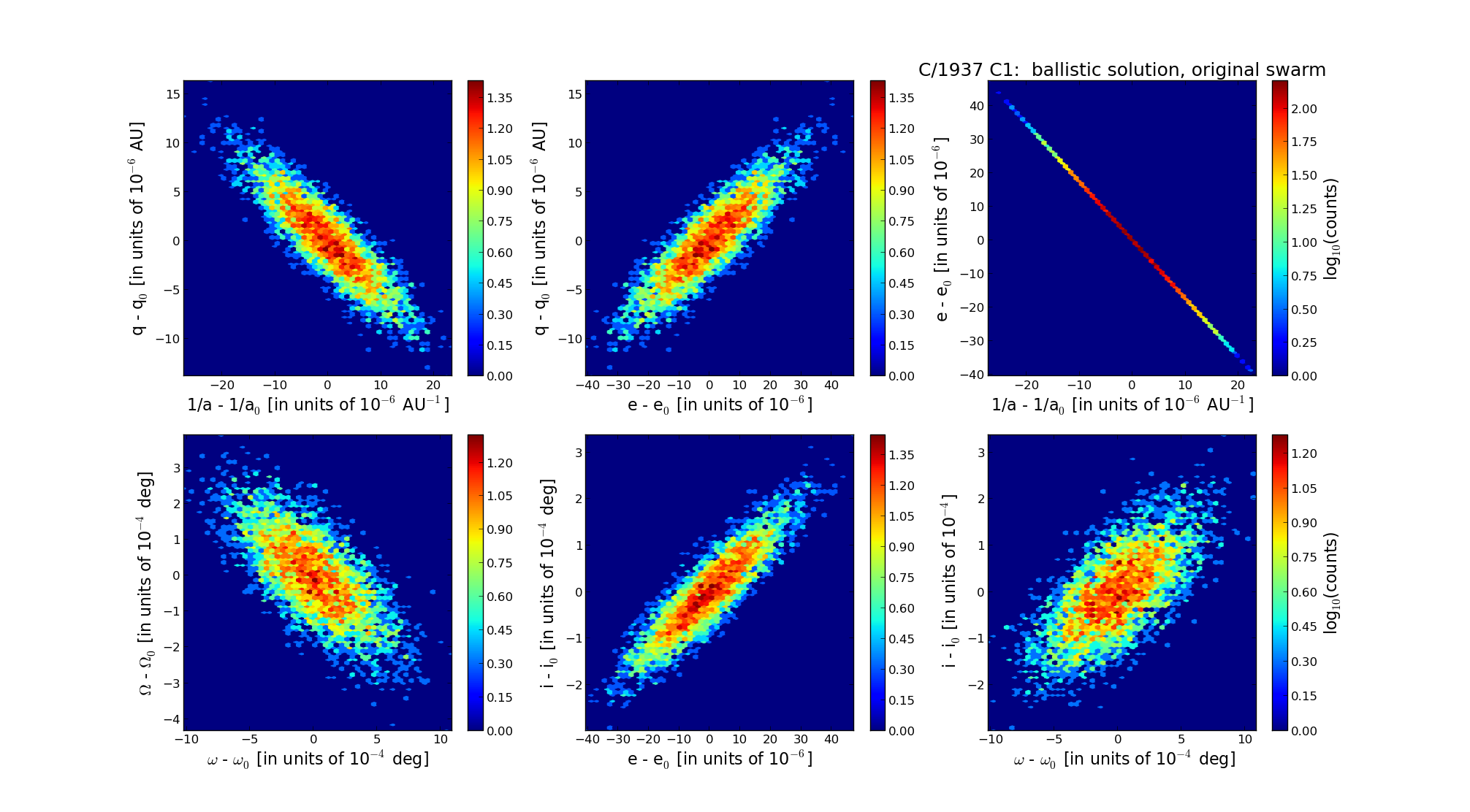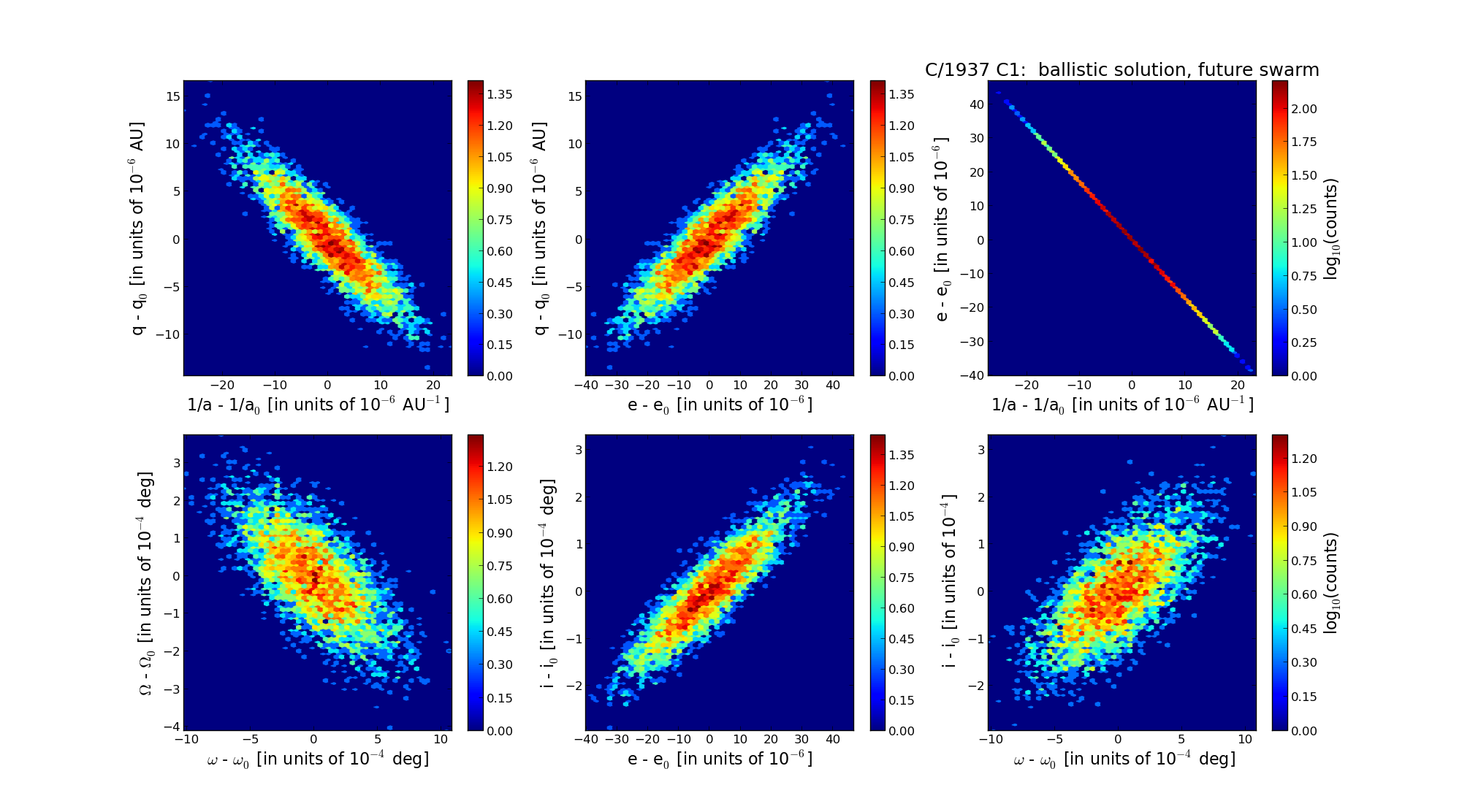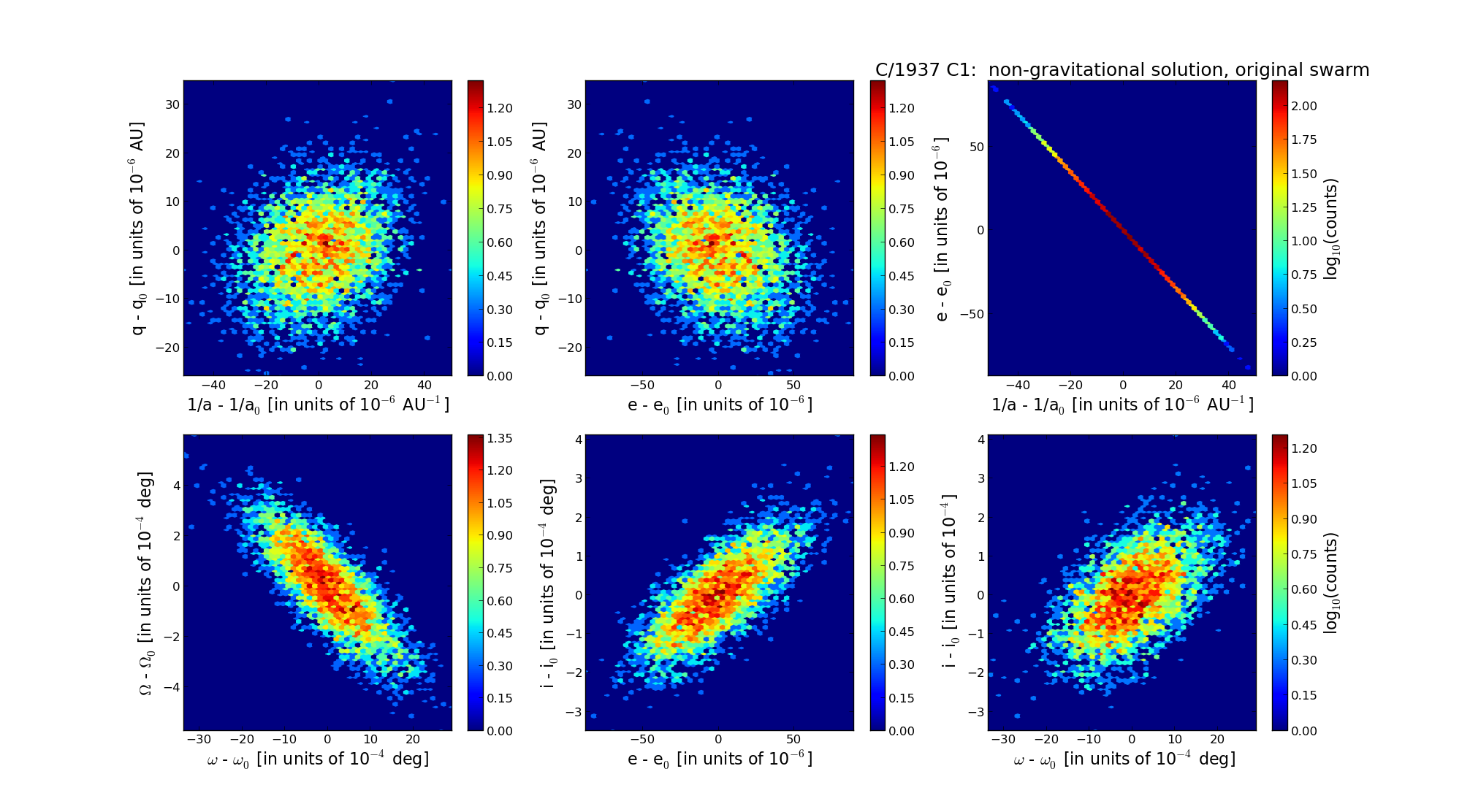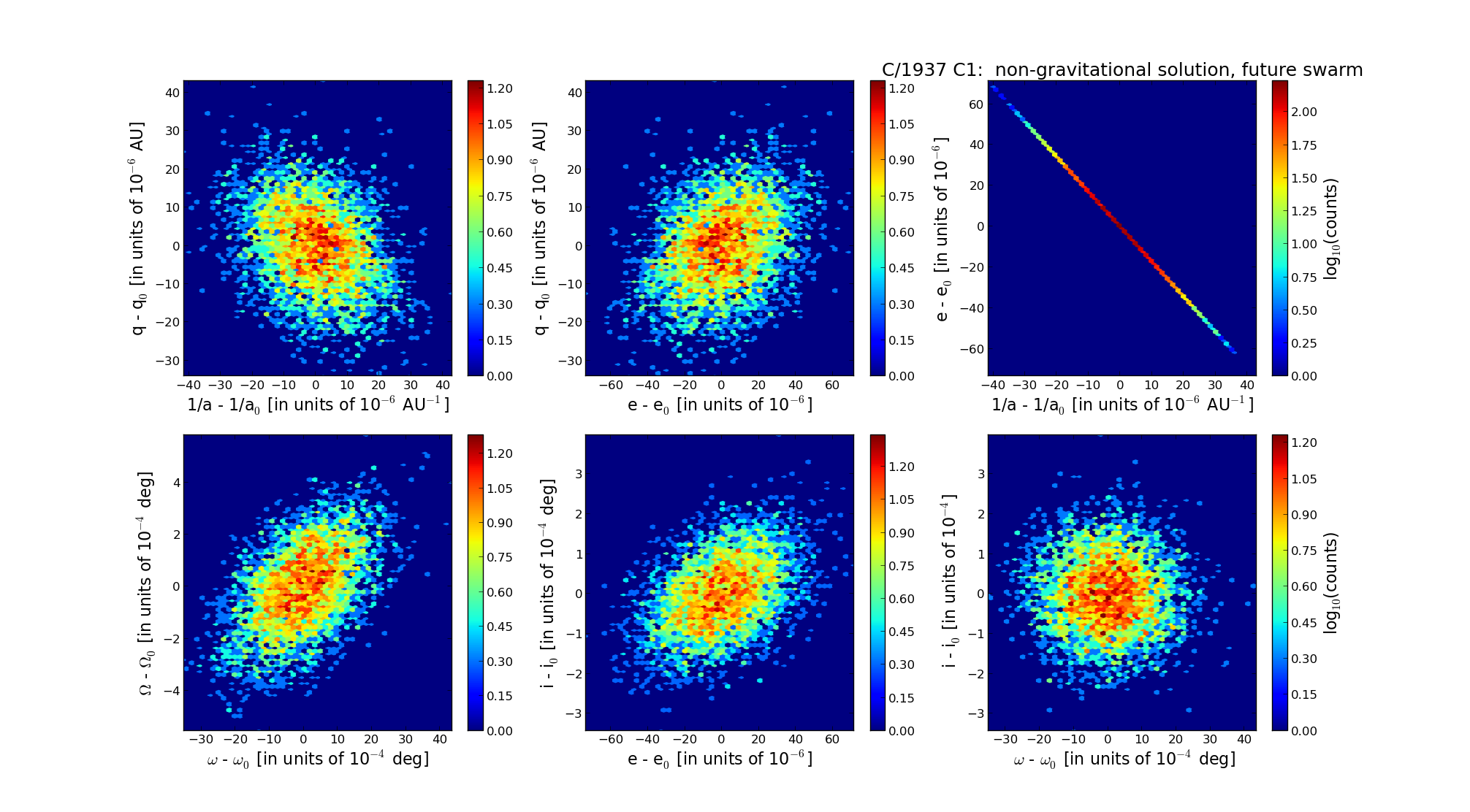| Solar System Dynamics & Planetology Group |
 |
C/1937 C1 Whipple |  |
| Solar System Dynamics & Planetology Group |
 |
C/1937 C1 Whipple |  |
| number of observations | 417 |
| number of residuals | 767 |
| data interval | 1937 Feb. 4 — 1937 Oct. 28 |
| rms [arcsec] | 2.53 |
| orbit quality class | 1b |
| Epoch (TT) | 19370706.0 | = JD 2428720.5 |
| time of perihelion passage (TT) | 19370620.063073 | ± 0.000498 |
| perihelion distance | 1.73378655 | ± 0.00000401 |
| eccentricity | 1.00014288 | ± 0.00001263 |
| argument of perihelion [deg] | 107.734884 | ± 0.000305 |
| longitude of the ascending node [deg] | 128.608042 | ± 0.000110 |
| inclination [deg] | 41.551513 | ± 0.000084 |
| inverse semimajor axis [10-6 au-1] | -82.41 | ± 7.29 |

| Epoch (TT) | 16370429 | |
| time of perihelion passage (TT) | 19370620.221049 | ± 0.000506 |
| perihelion distance | 1.73545046 | ± 0.00000397 |
| eccentricity | 0.99989864 | ± 0.00001243 |
| argument of perihelion [deg] | 107.714649 | ± 0.000300 |
| longitude of the ascending node [deg] | 128.591694 | ± 0.000109 |
| inclination [deg] | 41.523168 | ± 0.000084 |
| inverse semimajor axis [10-6 au-1] | 58.40 | ± 7.16 |

| Epoch (TT) | 22540505 | |
| time of perihelion passage (TT) | 19370620.739997 | ± 0.000458 |
| perihelion distance | 1.71646743 | ± 0.00000408 |
| eccentricity | 0.99760231 | ± 0.00001230 |
| argument of perihelion [deg] | 107.371079 | ± 0.000299 |
| longitude of the ascending node [deg] | 128.427941 | ± 0.000104 |
| inclination [deg] | 41.478490 | ± 0.000083 |
| inverse semimajor axis [10-6 au-1] | 1396.88 | ± 7.17 |
| number of observations | 417 |
| number of residuals | 766 |
| data interval | 1937 Feb. 4 — 1937 Oct. 28 |
| rms [arcsec] | 2.48 |
| orbit quality class | 1b |
| Epoch (TT) | 19370706.0 | = JD 2428720.5 |
| time of perihelion passage (TT) | 19370620.061675 | ± 0.000746 |
| perihelion distance | 1.73378562 | ± 0.00000410 |
| eccentricity | 1.00014873 | ± 0.00001307 |
| argument of perihelion [deg] | 107.734189 | ± 0.000445 |
| longitude of the ascending node [deg] | 128.607821 | ± 0.000150 |
| inclination [deg] | 41.551548 | ± 0.000089 |
| inverse semimajor axis [10-6 au-1] | -85.79 | ± 7.54 |
| Nongravitational parameters [10-8 au/day2] | A1 = 2.146 ± 0.968 | A2 = -0.002 ± 0.452 | A3 = 0.0 (assumed) |

| Epoch (TT) | 16370718 | |
| time of perihelion passage (TT) | 19370620.222929 | ± 0.000968 |
| perihelion distance | 1.73543405 | ± 0.00000793 |
| eccentricity | 0.99992220 | ± 0.00002491 |
| argument of perihelion [deg] | 107.716372 | ± 0.000841 |
| longitude of the ascending node [deg] | 128.591468 | ± 0.000156 |
| inclination [deg] | 41.523205 | ± 0.000090 |
| inverse semimajor axis [10-6 au-1] | 44.83 | ± 14.36 |

| Epoch (TT) | 22540326 | |
| time of perihelion passage (TT) | 19370620.736751 | ± 0.001577 |
| perihelion distance | 1.71645095 | ± 0.00001050 |
| eccentricity | 0.99762556 | ± 0.00002008 |
| argument of perihelion [deg] | 107.368860 | ± 0.001035 |
| longitude of the ascending node [deg] | 128.427721 | ± 0.000152 |
| inclination [deg] | 41.478508 | ± 0.000087 |
| inverse semimajor axis [10-6 au-1] | 1383.35 | ± 11.70 |